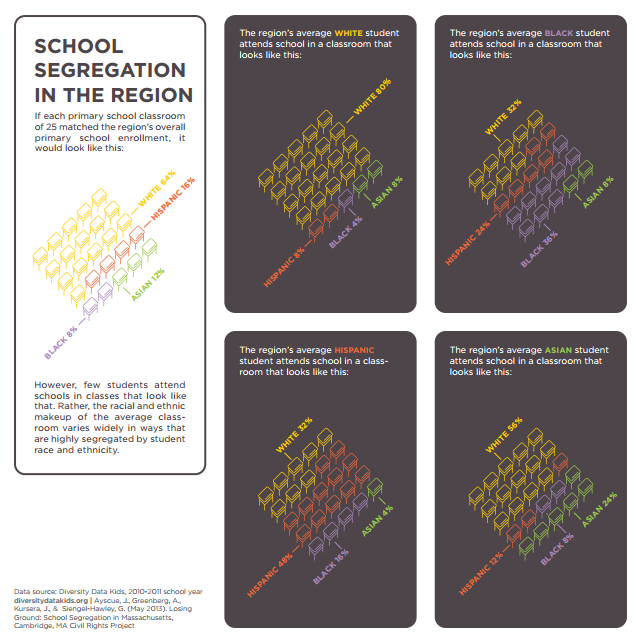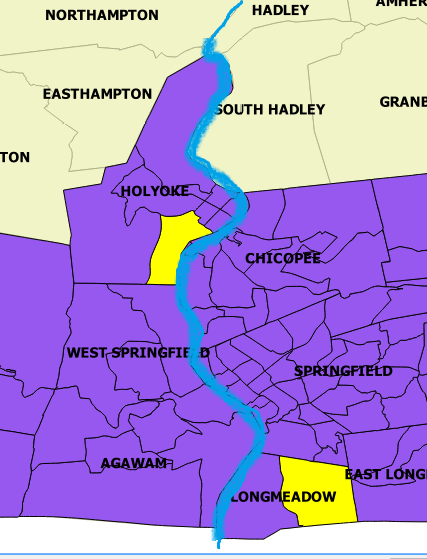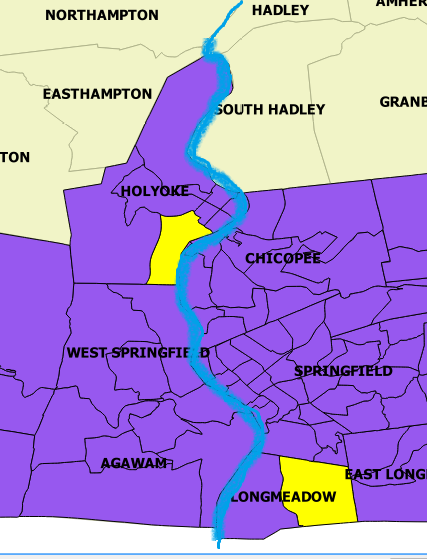Cards Against Humanity, for those who haven’t played, is a game that violates rules of social decorum for the purposes of being hilarious. A grown-up version of Apples to Apples, it pairs bawdy or scatological terms with fill-in-the-blank sentences (sort of like Mad Libs). Just click on the link above if you don’t understand.
I was playing Cards Against Humanity with some friends, and the prompt card read “White people like _______.” Of course, a flurry of potential things run through one’s mind when thinking about what funny card to put down for what white people like: “Panera Bread Company.” “Adam Sandler Movies.” “Colonialism.” As the judge flipped the cards, the clear winner was “White people like white people.”
As I have become more involved with issues surrounding equity, that round of Cards Against Humanity pops back into my mind now and again. How simple and unfortunately true it is.
The Metropolitan Area Planning Council has done a lot of work on segregation in Boston-area communities. One example of this is classroom makeup; the average white primary school student in the Boston region is in a classroom that is overwhelmingly white, whereas the average non-white student is in a much more diverse class.

You can find the series of graphics that MAPC did here.
Furthermore, there is evidence that our communities nationally are becoming more segregated at the suburban level. As this article from The Atlantic reports, the spatial manifestation of segregation has shifted out to the suburbs, where certain communities become known as “Hispanic” or “Black” towns. As the MAPC graphic suggests, segregated communities show up as segregated classrooms.
This has gotten me to wondering: How do things look in the Pioneer Valley? In a subjective, abritrary-ish selection, I decided to compare a census tract in Holyoke to a census tract in Longmeadow. Holyoke, a low-income city with a large immigrant population, probably looks like the classroom in the lower left-hand corner of the graphic above. Longmeadow, a leafy affluent suburb of Springfield, I’m guessing, looks more like the upper left-hand corner.
I chose two census tracts in the communities that were roughly comparable in size and population.*

Then I compared the race/ethnicity breakdowns between the 2000 census and the 2010 census. In 2000, the two tracts looked like this:

You can see that Holyoke looks a bit closer to Hampden County averages than Longmeadow. The census tract in Longmeadow has a substantially higher proportion of white people comprising their population, which becomes even more pronounced when looking at non-Hispanic whites.
By 2010, the breakdown looked like the following:

Hampden County as a whole, as well as Longmeadow and Holyoke in particular, saw the share of the non-white population increase. When looking at non-Hispanic whites, Longmeadow saw only a modest decrease (just over 4 percentage points), compared to the Holyoke which saw a 10 point decrease.
How do I interpret these findings?
On the question of whether there is segregation by community or “racial/ethnic clumping”: These two census tracts suggest that, indeed, “White people like white people.” Of the three geographies examined, the decrease in non-Hispanic whites was the smallest in Longmeadow. Hampden County, along with the nation as a whole, is becoming more diverse – Longmeadow is just taking a lot longer to do so.
But who cares?
That answer is complicated, but the issue for me has to do with the entanglement of race, class, and “The Opportunity Gap.” Longmeadow’s median household income is $108,835 according to the 2014 American Community Survey, while Holyoke’s is $35,550. This ends up being reflected in lower property values, which is then manifested as less money available for public schools (funded largely through local property taxes). The result: last April, Holyoke Public Schools were placed under state receivership.
There are a lot of reasons to dislike segregated communities, but the cycle of wealth and poverty ranks highest on my list. A fundamental aspect of the grand American experiment is social mobility. Separating people who are different from each other decreases access to new opportunities, and thus social mobility. MAPC has done a lot of work showing that this is a major problem in the Boston area. It looks like the Pioneer Valley has some work to do, too.
*The two census tracts examined in 2000 were split into four census tracts in 2010; the 2010 results represent summed counts corresponding to the original geographic extents.

